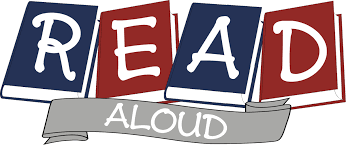Student Contributor: R. Veening
 As a teacher, if there is an idea you want to expose your students to, a constant issue in the classroom you need to address, or even just to take a moment of time to have your students get a brain break, you can purposefully choose a book to read aloud to handle what you need to handle. This management tool is helpful because there are some issues or needs that your students will have that the words of a good book can touch their hearts closer than what your words can in some cases.
As a teacher, if there is an idea you want to expose your students to, a constant issue in the classroom you need to address, or even just to take a moment of time to have your students get a brain break, you can purposefully choose a book to read aloud to handle what you need to handle. This management tool is helpful because there are some issues or needs that your students will have that the words of a good book can touch their hearts closer than what your words can in some cases.
Read aloud can be done in a multitude of ways. When using read aloud as a classroom management tool the process of the lesson becomes a little different in comparison to just reading a book aloud. There is a reason why you are reading the book to your students. Prior to reading the story I would talk about why this book is so special, begin getting the student curious about how this book relates to an idea of our classroom, and most importantly I want the story to teach a lesson that stays with them. After reading the story, using whatever addition you feel is best fitting you need to have your students do a task. In my experience I have used things like graphic organizers to reflect both in words and drawings on what the lesson of the story is and how we can apply that into our classroom. This works for a variety of ages because no matter the level students love stories, and you can use word responses as well as artwork for your students to express their feelings allowing this management tool to be used across multiple grade levels.
 The phase I chose to relate this classroom management tool to be the corrective phase, this is mainly because it is the phase I have used it in the most throughout my teaching experiences. I will say this management tool can be used effectively within all three of the phases. Correctively, if you are having a consistent issue repeat itself in the class whether that is talking out of turn, not using kind words, following directions, etc. You can use a specifically chosen story to read and reflect with your students to fix a problem. Preventatively, when you know, a situation is going to occur, like having a new student come to class, you can perform a read aloud that subconsciously get your students prepared and taught the behavior's you want them to know prior to that situation occurring. Lastly, if using this tool as a support, for example if you go over your classroom expectations at the beginning of the year you can use a read aloud to support some of the main ideas or expectations you have in the room and leave the book in sight for moments you need to refer or support a student.
The phase I chose to relate this classroom management tool to be the corrective phase, this is mainly because it is the phase I have used it in the most throughout my teaching experiences. I will say this management tool can be used effectively within all three of the phases. Correctively, if you are having a consistent issue repeat itself in the class whether that is talking out of turn, not using kind words, following directions, etc. You can use a specifically chosen story to read and reflect with your students to fix a problem. Preventatively, when you know, a situation is going to occur, like having a new student come to class, you can perform a read aloud that subconsciously get your students prepared and taught the behavior's you want them to know prior to that situation occurring. Lastly, if using this tool as a support, for example if you go over your classroom expectations at the beginning of the year you can use a read aloud to support some of the main ideas or expectations you have in the room and leave the book in sight for moments you need to refer or support a student.
Performing a read aloud is collaborative but more so teacher lead through my experiences. You could have your students choose and read aloud the book to their classmates at older ages but for the purpose of teaching a lesson it can be better to take a little more teacher directed approach and take the time to purposefully choose a story. The collaboration is shown during the questioning, reflection, and lesson teaching of the read aloud.
More Information –
Tool Source: Gus Nollmeyer
https://teach.its.uiowa.edu/sites/teach.its.uiowa.edu/files/docs/docs/What_are_the_Benefits_of_Reading_Aloud_ed.pdf



I used this tool in an urban 6th-grade class with 14-20 students. The tool was easy to prepare because picture books are short but can also hold important messages. Because of this, they’re easy to read and plan for as a teacher; simply finding the moral/main message of the story to connect within your classroom. Because I work in an English class, it was easy to plan a few questions for students to answer about the importance of kindness (my Read Aloud topic). I also thought because it was a more relatable, enjoyable topic for students to read about than the academically heavy work we’d been doing the previous weeks that made it easier to teach. The days/week after reading, I noticed the students sticking up for each other more. Even some students having issues talked outside of the class, with adult supervision, to discuss the underlying issue and how it could be resolved. Most students understood this tool and its role in the classroom, but a few were edgier about “picture books in middle school” but their classmates stuck up for the lesson and said their comments weren’t kind. The only adjustments I would do would be making this tool more regular within my classroom so that I wouldn’t have to deal with those students who were rude about “reading kids’ books” because the process would be familiar to them and not seen as coming out of nowhere.
Corrective: 5th grade, 24 students, suburban area.
Doing a read aloud to give my students a break worked really well for them. At the end of the day, students were getting a bit rowdy and excited, not really focusing on their given work. My mentor teacher and I recognized they just needed a break, so I read aloud one of the books we are reading as a class to give them a break from the long day they had. Everyone got comfortable around the room, quieted down, and got excited to listen. It was a great way to calm everyone down before the bell rang and keep our community a place to not be overwhelmed. This tool was easy to prepare for because we were already reading a book as a class, so it was easily taught and useful for their learning. The success I saw was that students were regulating and happy to listen to the book because they were interested in it. The students were understanding that we needed a break because we expressed this before saying it seems like it’s a good stopping point in the last assignment and we can pick up where we left off tomorrow. An adjustment I could make is to put on the audio book to give myself time to figure out how the next day would run if we were going to move the assignment date back a day.
How easy was the tool to prepare for, teach, and use?
– The tool was easy to prepare for. I found a book that covered a behavioral issue I wanted
students to work on. In this case, it was kindness and inclusivity. I found a book I liked, read
through it a couple of times, and then decided on questions I wanted my students to think
about and answer. I also wanted my students to self-reflect on this book so I asked them to
think of a personal example, mine was “How do you feel when left out of activities”. This
wasn’t for them to share, it was more about keeping it in mind while I read. After I read the
book me and the class formed a circle and had a class discussion about the book and overall
kindness.
What successes did you notice with the tool?
– I noticed that my students were very open when we shared and were very ready to self-
reflect. I was surprised how some students were ready to share a time when someone was
rude to them, even though that wasn’t an expectation they shared anyway. I was glad that the
classroom felt safe for them to open up. I was also glad about how students were able to talk
about why we are mean to each other and were able to think of ways to apologize to others
when we are, and how we can go about being kinder.
Did the students understand their role with the new tool?
– Their role was to listen rather than discuss after. They are used to read-alouds so they
understand their role during those which are on the carpet and quiet so we can all hear. They
also know that if they have a question they need to raise their hand. I told them of the
expectations going into the discussion such as raising their hand to share, listening when
others are talking, and using kind language.
What adjustments could be made to make it even better?
– I don’t know how many other adjustments I could make. Though I did like having a class
discussion I could also maybe have them reflect in writing and then come back together. Or
just have another form of activity to try with them.